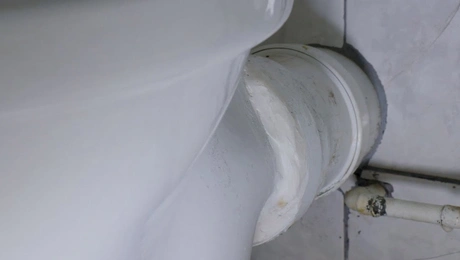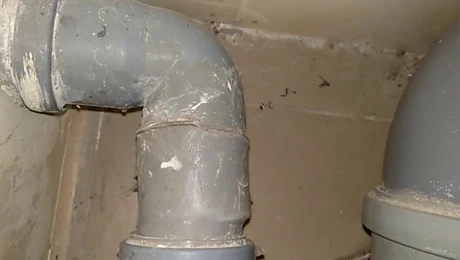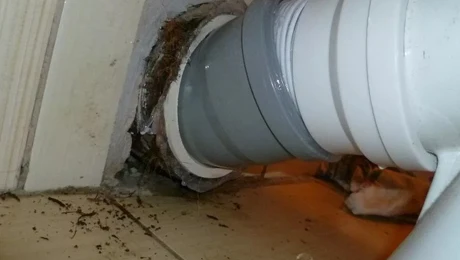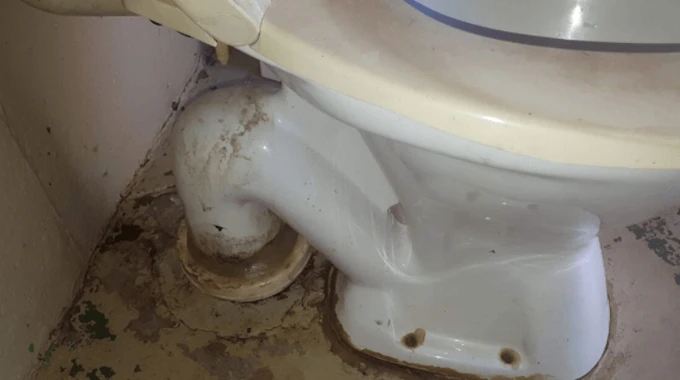Last Updated on January 21, 2023
If you have an old toilet waste pipe in your house that is starting to leak, then you will need to seal it as soon as possible. It can be a real pain having to constantly mop up water from a leaky pipe, and it can also cause severe damage to your floors and walls if left unchecked.
This ultimate guide will show you how to seal old toilet waste pipe in just a few simple steps. We will also provide some top tips on how to prevent your pipes from leaking in the future.
Tools and Materials Needed
- Toilet wax ring
- Pipe sealant
- Caulk gun
- utility knife
How to Seal Old Toilet Waste Pipe: Step-By-Step Guide

There are a few different ways to seal an old toilet waste pipe, but the most effective way is to use a toilet wax ring.
1. Remove the Toilet
The first thing you need to do is remove the toilet from its base. You will need to unscrew the two bolts holding it and then lift the toilet straight up.
2. Clean the Pipe
Once the toilet has been removed, you will need to clean the leaking waste pipe. Use a utility knife to scrape away any debris or buildup, then flush the pipe out with some water.
3. Apply Pipe Sealant
Next, apply a generous amount of pipe sealant around the base of the waste pipe. Make sure to get into all of the cracks and crevices, as this will help create a water-tight seal.
4. Install Toilet Wax Ring
Now it’s time to install the toilet wax ring. This is a rubber ring that sits between the waste pipe and the toilet, and it will help create a water-tight seal.
5. Reattach Toilet
Once the wax ring is in place, you can reattach the toilet to its base. Make sure to use the bolts that you removed earlier, and then give the whole thing a good tightening.
6. Apply Caulk
Finally, apply a bead of caulk around the base of the toilet. This will help to seal further the connection between the toilet and the waste pipe, and it will also make it easier to clean up any leaks that may occur in the future.
And there you have it! By following these simple steps, you should be able to easily seal an old toilet waste pipe and prevent any future leaks.
You Also Might Be Interested: Is it possible to properly maintain caulked drywall cracks?
Tips for Keeping Your Old Toilet Waste Pipe in Good Condition?

There are a few things that you can do to keep your old toilet waste pipe in good condition and prevent it from leaking in the future.
1. Use Pipe Insulation
One of the best ways to keep your old toilet waste pipe in good condition is to use pipe insulation. This will help to prevent any water from leaks from coming into contact with the pipe, and it will also make it easier to clean up any spills that do occur.
2. Replace Wax Rings Regularly
Another good tip is replacing the wax rings you use to seal the pipe regularly. These rubber rings can deteriorate over time, so it’s essential to replace them every few years to ensure a water-tight seal.
3. Check for Leaks Regularly
Make sure to check for leaks regularly. Even a small leak can cause severe damage to your floors and walls, so it’s important to catch them as soon as possible.
4. Use a Pipe Cover
If you have an old toilet waste pipe that is particularly susceptible to leaks, you may consider using a pipe cover. This will help protect the pipe from any further water damage, and it will also make it easier to clean up any spills that do occur.
5. Repair Cracks and Holes ASAP
If you notice any cracks or holes in your old toilet waste pipe, then it’s essential to repair them as soon as possible. These openings can allow water to leak through, so it’s essential to seal them up before they cause any severe damage.
The Consequence of Not Sealing an Old Toilet Waste Pipe

Here are some of the effects that can result from not sealing an old toilet waste pipe:
1. Water Damage
Water damage is one of the most common consequences of not sealing an old toilet waste pipe. If a leak goes unnoticed, it can cause serious damage to your floors and walls.
2. Mold and Mildew
Relevant Article To Read: Is painting over moldy drywall a good idea?
Another consequence of not sealing an old toilet waste pipe is the growth of mold and mildew. These harmful organisms can cause serious health problems, so it’s essential to prevent them from growing in your home.
3. Pest Infestation
Another potential consequence of not sealing an old toilet waste pipe is a pest infestation. Small animals and insects can enter your home through these openings, and they can cause a lot of damage.
4. Structural Damage
Another serious consequence of not sealing an old toilet waste pipe is structural damage. If a leak goes unnoticed for too long, it can cause the walls and ceiling.
5. Health Hazards
Finally, another consequence of not sealing an old toilet waste pipe is the potential for health hazards. If mold and mildew are present, they can cause severe respiratory problems. Additionally, if small animals can enter your home, they can transmit diseases.
FAQ’s
How Do You Plug a Drain Pipe?
One way to plug a drainpipe is to use a rubber stopper. This will create a water-tight seal and prevent any leaks. Another way to plug a drain pipe is to use a pipe cover. This will also create a water-tight seal and prevent any leaks.
How Do You Fix a Hole in a Drain Pipe?
If you have a hole in your drain pipe, you can try to patch it with epoxy or another type of sealant. If the hole is too large, you may need to replace the entire section of the pipe.
Conclusion
Now that you know how to seal old toilet waste pipes, it’s essential to take the necessary steps to keep your pipe in good condition. Use pipe insulation, replace wax rings regularly, and check for leaks on a regular basis. Additionally, if you have an old toilet waste pipe that is particularly susceptible to leaks, consider using a pipe cover.




Point taken from the explanation
Thanks. 🙂